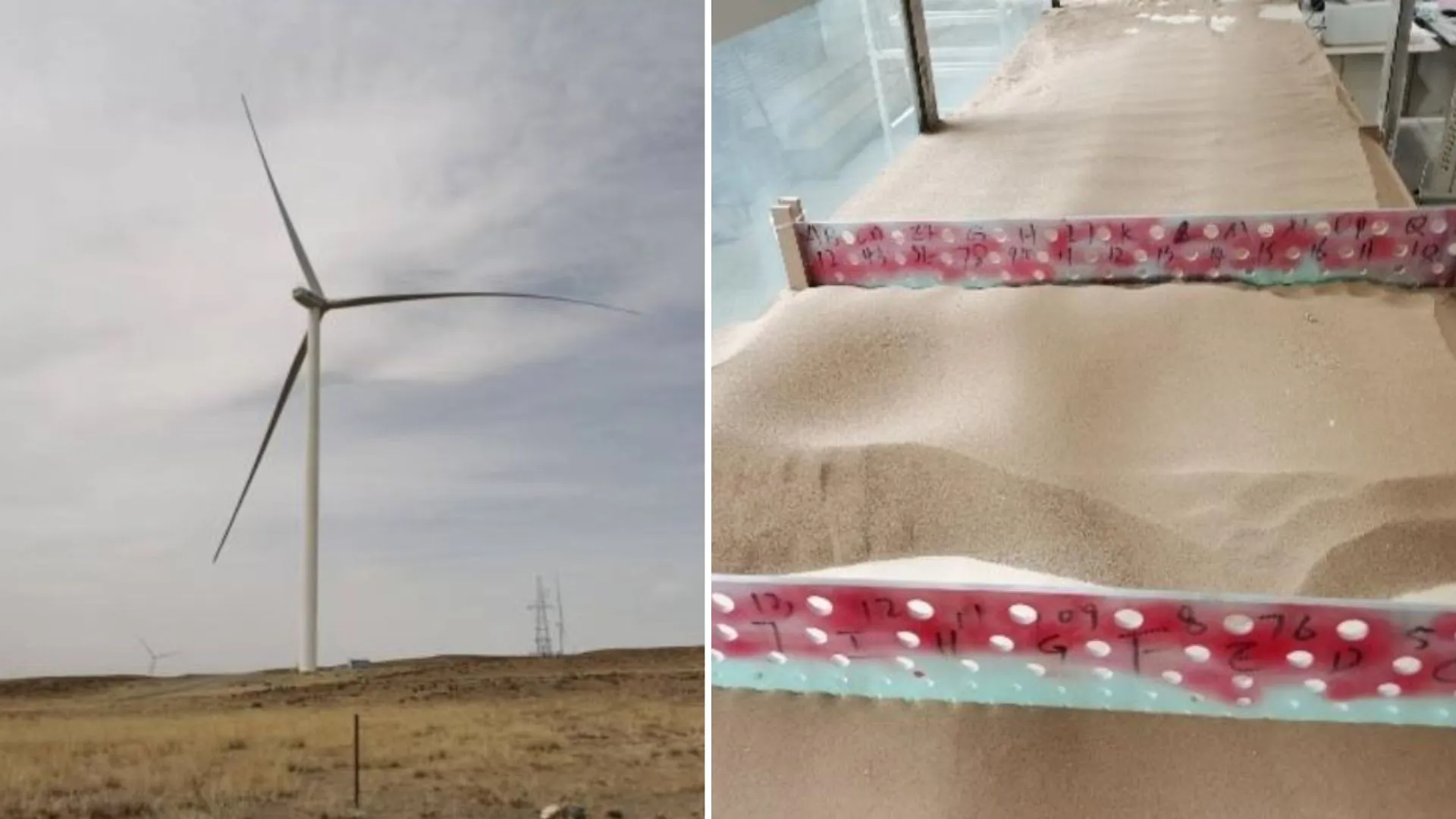
Researchers in China have found a way to fight desertification by recycling retired wind turbine blades into durable sand barriers.
The project is led by the Research Station of Gobi Desert Ecology and Environment under the Northwest Institute of Eco-Environment and Resources, Chinese Academy of Sciences.
Their work tackles two problems at once: stopping sand from spreading in arid regions and finding new uses for massive amounts of wind turbine waste.
Wind farms in western China are often located near deserts. Many of their turbines, installed in the early 2000s, will reach the end of their 20 to 25-year lifespan around 2025. Instead of leaving the retired blades as waste, researchers saw an opportunity to use them locally.
“The new solution was inspired by our long-term study on sand evolution, sand-control materials, and their engineering applications,” said project leader Liu Benli.
“It also echoes current and future demands of the new energy industry in treating damaged or retired wind turbine blades.”
Stronger than traditional barriers
The recycled blade barriers show far greater durability than traditional materials. Tests revealed they are 14 times stronger than wood composite boards and can resist ultraviolet radiation, high temperatures, and constant sand abrasion.
“Wind-tunnel experiments and computer simulations confirmed that these barriers can significantly reduce near-surface sand transport by altering the flow patterns of wind-blown sand,” Liu explained.
Unlike straw or reed barriers that gradually decompose, the composite material from turbine blades can survive extreme desert conditions for much longer. This provides a stable solution for communities struggling against sand damage.
“With large-scale retirements of wind turbines expected during China’s 14th and 15th Five-Year Plan periods, the technology could enable on-site recycling of blades into effective, long-lasting sand-control structures, reducing both waste and environmental degradation,” said first author He Chenchen.
A second life in harsh landscapes
The city of Dunhuang in Gansu province is a prime example of why this innovation matters. Located on the edge of the Kumtag Desert, Dunhuang has long battled sandstorms that threaten its oases and cultural heritage sites such as the Mogao Grottoes. Oases cover only 4.5 percent of its land, making sand control essential.
Conventional materials cannot withstand such conditions for long. “It is crucial to explore new sand control materials that can adapt to harsh environments,” Liu emphasized.
That urgency matched with timing. As turbines start retiring in large numbers from 2025 onward, the overlap of desert locations and wind farms creates a ready source of recyclable material.
“Fortunately, our tech idea was just right for the demands of a local clean-energy company, which contacted our team to offer used blades for waste utilization research,” Liu told Xinhua.
The team cut, drilled, and processed the retired blades into porous structures that let wind pass through in controlled patterns while trapping sand.
Future potential for large-scale use
By the end of the 14th Five-Year Plan (2021–2025), China will see its first wave of wind turbine retirements, affecting more than 1.2 million kilowatts of wind farms that will surpass 20 years of operation. By the 15th Five-Year Plan (2026–2030), that number could rise to around 10 million kilowatts annually.
“In the future, these retired wind turbine blades can be locally transformed and reused by using our new technology, achieving the goal of recycling locally,” said He Chenchen.
Field studies will continue to refine the barriers and adapt them to different desert regions. Liu added that the project shows how renewable energy infrastructure can find a second life in environmental protection.
The findings were published in International Soil and Water Conservation Research.



